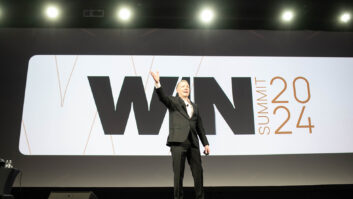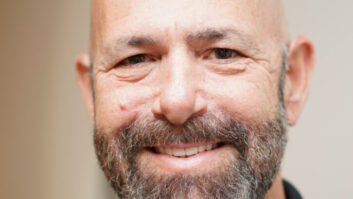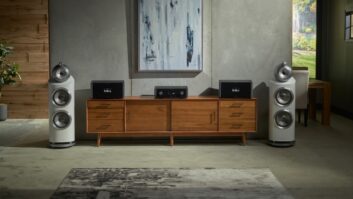For the traditionally staid world of retail buying groups, the past six months have been anything but.
Given the demise of the $3.5 billion Key America consortium late last year, and the birth pangs of mid-tier wannabe ASTAR (see sidebar below), the playing field has altered considerably for the electronics and appliance industries’ seven remaining buying organizations.
But apart from the shifting group dynamics, and the new opportunities and challenges the changes afford, buying group executives are upbeat about the prospects for another banner sales year. Attention-grabbing innovations in both brown and white goods, and the high-margin business of installing them, are tempering fears of a slowdown in consumer spending and of stepped-up competition from national big-box chains.
At Best Brands Plus, Rick Bellows observed, “Last year was outstanding, and so was the first quarter of this year. We’re seeing record numbers on top of record numbers.”
Although business took a breather in April, Bellows, the group’s merchandise manager for consumer electronics and major appliances, said the downturn wasn’t unexpected after 20 months of continual gains. Aside from the still-bullish economy, he attributed the “unprecedented growth” of the group — which picked up some 100 new members following Key’s demise — to greater dealer savvy.
“Our dealers are running their businesses as efficiently as ever, and maximizing profits,” he explained. “Now the focus is on driving traffic.”
Additional ammo is coming from vendors via exciting product improvements. “The buzzword is innovation,” Bellows noted. “In white goods, you’ve got every major manufacturer coming up with innovations to replicate Neptune’s home run.”
Fortunately, the higher gross margins of high-end majaps are helping dealers make up for eroding prices on less esoteric goods, he said. “You’re seeing deluxe 18-cubic-foot glass shelf refrigerators selling for $399, which is where 15-cubic-foot models were a year ago.”
Best Brands’ other major appliance challenge is Home Depot and its growing white-goods assortment. “They’re getting ready to get cranking, and that’s going to get ugly,” Bellows said.
Bob Lawrence, executive director of Associated Volume Buyers, agreed that “channel conflict” is the biggest problem facing the independent appliance dealer. “Now we have another segment to compete with, and the challenge is going to be who’s going to get that customer?”
To ensure that AVB members get their fair share, the group is hammering home its message of service, selection and value through its national Brand Source advertising campaign, its toll-free dealer referral hotline, 877-Go-Brand, and its aggressive support of its website, www.brand-source.com.
Indeed, Lawrence has cannily secured the search engine “rights” to some 300 majap-related terms at AOL, Excite, Go and Yahoo, so that entering words such as “washer,” “dryer” or “Whirlpool” will whisk web surfers to the Brand Source homepage.
“It’s all about brand building,” Lawrence said. “The name of the game is footprints, and the challenge is how to get more customers into members’ stores anytime, anywhere.”
Meanwhile, despite a ho-hum April attributable to a late Easter, the taxman and a roller coaster stock market, Lawrence reported that first-quarter business is up across the board.
Leading the charge for AVB are laundry and cooking products in white goods, and DVD, big-screen TVs and HD-ready sets in brown. “Aside from the issue of channel conflict, it’s going to be a real good year, slightly better than 1999,” he said.
Also boding well for AVB is the growth of its specialty-store subgroup, Audio/Video Independent Dealers (AVID), which has expanded its membership roster to 150. According to national electronics coordinator Jim Ristow, AVID gained 40 former Key America members and added another 20 dealers over the past year.
Also expanding its membership ranks is the Progressive Retailers Organization (PRO Group), the high-end A/V dealer confederation that added ex-NATM member Vann’s and New York-area specialty chain 6th Avenue Electronics to the fold this spring.
“Vann’s growth was in electronics, not white goods,” observed executive director Roger Heuberger. The Montana merchant was one of four smaller NATM members who were ousted from the group in March in an action that gave ASTAR its impetus.
6th Avenue, he added, “had expressed an interest in joining for some time. We always evaluate candidates in their markets, and we wanted to see how their new stores turned out. Well, they were terrific, and 6th Avenue is a good fit in terms of its brand compatibility.”
This year’s additions, which include former HTSA members Myer-Emco and Audio Video Systems, helped offset group attrition as Tweeter Home Entertainment, PRO’s second largest retailer behind Ultimate Electronics, continues to gobble up members in its growth-through-acquisition strategy. The latest buyout, Chicago-based United Audio, was announced in January.
Heuberger lauds Tweeter for offering an exit strategy to members with succession issues, or, in the case of United Audio, providing the capital to expand its market presence. And, despite their size, he said both Tweeter and Ultimate remain committed to the group experience.
“Neither has expressed any interest in leaving,” Heuberger noted. “They like it. They’re on the board of directors, and their involvement with the group is considerable. Sure they get most of the same deals that PRO does. But both have seen large companies that go independent falter because there’s no support system. By meeting at the committee level to discuss what’s working and what’s not, it allows you to minimize your mistakes.”
Like PRO, custom installation is a key focus of the Home Theater Specialists of America (HTSA). Indeed, at its semiannual powwow in Maui last March, executive director Richard Glikes said one of the group’s goals this year will be to “raise the level of custom expertise” among members.
Along with the rich profits custom provides, the category will help HTSA dealers differentiate themselves from higher-volume electronics chains that are less adept with sophisticated systems, the group argues.
More recently, the HTSA rank and file reconvened in Las Vegas earlier this month for a full day of best practices idea-sharing that was opportunistically tied in to Mitsubishi’s line show, Glikes said. The next big group event, following a CEDIA meeting Sept. 7, is its fourth annual Fall Pump Up, Oct. 13-15 in Chicago, where members will review the “entire custom-installation process,” and upward of 40 manufacturers will be represented.
Also holding a major conclave this spring was NATM, whose members returned from their annual meeting in Tucson, Ariz., fired up by the group’s newfound focus and team spirit. Unfortunately, the gathering proved to be the last for nine-year member Roberds, which was unable to emerge from Chapter 11 bankruptcy protection and finally pulled the plug on its operations this month.
According to executive director Bill Trawick, the impact on NATM has been minimal given Roberds’ steady decline. “We kind of thought that would happen, and the manufacturers anticipated it, so the adjustment in volume had already taken place,” he said. “While we don’t want to lose volume, it doesn’t put any burden on us and will have no real impact on the group.”
Indeed, Trawick feels no compulsion to fill the void created by the loss of Roberds, the dismissal of Vann’s and fellow expatriates Handy, Queen City and Video Only, and the demise two years ago of Sun TV & Appliance
“There’s no need to recruit, we’re fine the way we are,” he said. “There are only a select few independents that we would have an interest in if they had an interest in us.”
The thinning of NATM’s ranks brings its membership down to an even dozen dealers and will cut its annual sales volume by a half-billion dollars to $2.5 billion this year. But the group is confident that a more unified buying stance, improved forecasting and forthcoming intranet efficiencies will more than compensate for the declines.
“The members feel very good,” Trawick said. “We had a very good meeting in Tucson, and the members came back very upbeat.”
The first quarter proved “pretty good” for the 120 merchants who make up MARTA, reported executive director Warren Mann. Though April “was nothing to write home about” thanks to tax season and an early Easter, May is already showing signs of improvement.
On the electronics side, “people are still very optimistic,” he said. “Although we’re scrambling to get our hands on enough digital merchandise, the analog business hasn’t given up anything. The digital business is just layering on top.”
Nevertheless, the former NATM executive believes that “you’re going to hear more noise about white goods because appliances have always been a more stable business. Appliance people are also a little more clever about midcourse corrections — adding features, changing looks — than electronics people.”
Meanwhile, MARTA is preparing for its show and conference June 15 in Scottsdale, Ariz., where a newly elected board will convene for the first time and a new, as yet unannounced member will join the group’s ranks.
New members were almost problematic for Nationwide, the industry’s largest buying confederation, which is still digesting the lion’s share of Key America’s 1,700 former affiliates.
“It’s difficult for all groups when there is a wide deviation in size between members,” acknowledged director Ed Kelly. “A $200 million business has distinct needs from a $50 million business.” The issue has gained added urgency with the advent of ASTAR, whose proposed core membership is comprised largely of larger Nationwide dealers.
“We started to address the needs of the larger members a year and a half ago,” Kelly related, “and a lot of the major issues have been put aside. We’re meeting with our larger players again in July, and we’re really stepping up to the plate to address the needs of all our different groups by beefing up our operation and adding personnel. Things are moving pretty positively.”
Also gaining momentum is Nationwide’s Internet strategy. The group is about to announce its participation in DirectAppliance.com, a forthcoming e-tail site for which Nationwide will provide fulfillment. The timing is especially propitious now that the high end of the group’s white-goods business is “just going through the roof. We’re seeing upward of 40 percent growth and a definite shift to higher-end lifestyle products.”
But all is not sweetness and light in appliances. Of major concern is the move by manufacturers to shut distribution centers and supplant the facilities with factory-direct shipments or two-step alternatives, although Kelly said the group is prepared to build additional warehouses if necessary.













